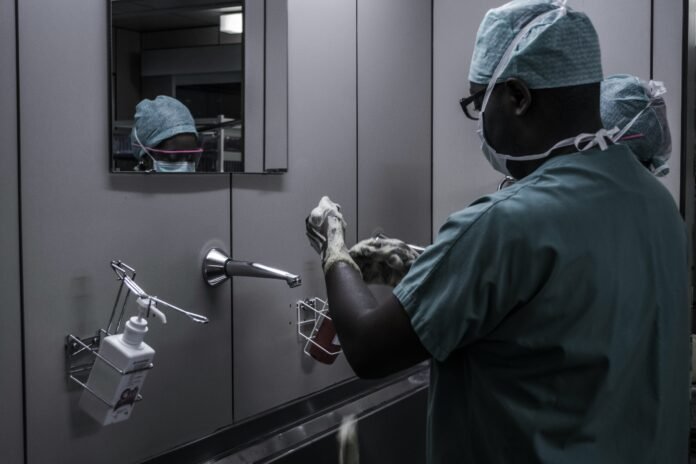Selecting the right surgical tools for your medical practice is a critical decision that affects not only the efficiency of your procedures but also patient outcomes. Having the appropriate instruments ensures that surgeries go smoothly, reduces the risk of complications, and even enhances the precision of the surgeon. In this article, we’ll explore the key factors to consider when choosing surgical tools for your practice.
Understand Your Practice’s Needs
The first step in choosing the right surgical tools is understanding the specific needs of your practice. Start by assessing the types of surgeries you perform. Different procedures require specialized instruments, so it’s crucial to identify the specific tools you’ll need for each surgery. For example, an orthopedic surgeon will need bone saws and drills, while a plastic surgeon will require precision tools for delicate tissue work.
Additionally, consider the demographics of your patients. For instance, pediatric surgeries may require smaller, more delicate instruments, while a general surgery practice may need a wider range of tools to accommodate various patient sizes and conditions. Evaluating your practice’s size and the volume of surgeries you perform will help you determine the right mix of instruments.
Quality and Durability of Tools
One of the most important factors when choosing surgical tools is quality. High-quality tools made from durable materials, such as stainless steel or titanium, ensure longevity and consistent performance. Investing in durable instruments reduces the need for frequent replacements and repairs, ultimately saving your practice money in the long run.
When evaluating suppliers or manufacturers, look for companies that have a solid reputation for producing reliable and durable tools. It’s worth paying extra for higher-quality instruments that will last longer and maintain their sharpness and precision after repeated use.
Ergonomics and Ease of Use
Surgical tools should not only be high-quality but also comfortable for the surgeon to use. Ergonomically designed instruments help reduce surgeon fatigue during long or complex procedures, improving precision and control. Tools that fit comfortably in the hand can also minimize strain and discomfort, allowing the surgeon to focus fully on the task at hand.
It’s essential to choose tools that align with the specific techniques and procedures your practice performs. Instruments that are easy to handle and compatible with your surgical style will enhance both the surgeon’s performance and the patient’s experience.
Sterilization and Maintenance
Sterilization is a critical aspect of surgical tool management. Tools that are easy to sterilize and clean between procedures help reduce the risk of infection and maintain patient safety. Look for instruments with smooth surfaces and simple designs, as these are typically easier to clean and maintain.
In addition to sterilization, regular maintenance is key to prolonging the life of your tools. Choose instruments that require minimal upkeep but are built to withstand regular sterilization without losing their effectiveness. Well-maintained tools will remain sharp and effective for a longer period, ensuring consistent performance during surgeries.
Compliance with Medical Standards
When selecting surgical tools, it’s important to ensure that they meet international safety and quality standards. Surgical instruments should be certified by recognized organizations, such as the FDA or CE markings, which indicate that the tools have been tested and approved for medical use.
Working with reputable suppliers who adhere to these standards ensures that your tools meet the required specifications for quality, sterility, and safety. Compliance with these standards not only guarantees better patient outcomes but also helps protect your practice from legal and regulatory issues.
Cost Considerations
While quality is essential, cost is also a significant factor when choosing surgical tools. Balancing upfront costs with long-term value is critical to making the right investment. High-quality tools may have a higher initial cost, but they often provide better value over time due to their durability and lower need for replacement, visit surgical website to know best option before you make a decision.
When comparing different brands, look for tools that offer the best combination of performance, durability, and price. Avoid choosing cheaper tools that may wear out quickly, requiring more frequent replacements, which can end up costing more in the long run. Investing in reliable, high-quality instruments is a smart financial decision that pays off over time.
Technological Advancements
Surgical tools have evolved with advancements in technology, and incorporating modern instruments can enhance the precision and success of your surgeries. Many practices are now investing in tools that feature advanced technology, such as robotic-assisted instruments or tools with built-in imaging capabilities.
Read More About: Pulse Survey Tools
Technological advancements can also improve patient outcomes by reducing the invasiveness of procedures and allowing for more accurate results. Consider staying up-to-date with the latest innovations in surgical instruments to provide the best care possible to your patients.
Conclusion
Choosing the right surgical tools is a critical decision that can impact the efficiency of your practice and the success of your procedures. By assessing your practice’s specific needs, prioritizing quality and durability, and ensuring compliance with medical standards, you can select instruments that provide long-term value and improve patient outcomes. Don’t overlook the importance of ergonomics, ease of sterilization, and technological advancements in your selection process. Investing in high-quality surgical tools not only boosts your practice’s efficiency but also ensures better care for your patients.
read more blogs

